Discover Go Creative Show
Go Creative Show

Go Creative Show
Author: Ben Consoli
Subscribed: 787Played: 11,606Subscribe
Share
© 2018 BC Media Productions
Description
Go Creative Show is a place for revealing and informative interviews with A-list filmmakers. Hosted by Producer and Director Ben Consoli, each week we feature cinematographers, production designers, directors and producers to share behind the scenes experiences from the hottest movies and shows. Whether you're a brand new filmmaker or a film industry veteran, Go Creative Show will entertain, inform and make you a better filmmaker.
224 Episodes
Reverse
Join host Ben Consoli as he welcomes back Drew Wehde, the brilliant cinematographer behind The Bear Season 4. Drew dives deep into the chaos and beauty of shooting one of the most creatively daring shows on TV. From the philosophy of forgetting your work to designing lighting systems with 18Ks and Infinimats, Drew breaks down how The Bear achieves its raw, immersive style—and why sometimes, there's no storyboard at all. Whether you're a seasoned DP, an indie filmmaker, or a Bear superfan, this is a must-listen. 🎬 Topics Covered How to be present — stay focused on the moment while filming Why filmakers should forget past work to unlock fresh creativity Balance between filmmaking and family matters Drew's crew shares his "live in the now" mindset The Bear uses bold, evolving visual techniques Lighting and color are core to the show's style He built a custom lighting system for fast adjustments The Season 4 finale is driven by character, not chaos No storyboards or shot lists — pure flexibility on set Filmmaking is a true collaboration with his team 🎥 Watch The Bear Season 4 Trailer 🎧 Subscribe to the Go Creative Show wherever you get your podcasts 📸 Follow Drew Wehde on Instagram @andrewwehde
In this episode of the Go Creative Show, cinematographer Stephan Pehrsson returns to discuss his visual approach to the latest Black Mirror episodes, including 'USS Callister: Into Infinity' and 'Bête Noire'. We dive into lighting technology, camera choices, in-camera effects, and the psychological tension behind every frame. 🎬 Topics Covered How Black Mirror's Visual Style Has Evolved Since Season 4 The LED Lighting Revolution: What's Changed Behind the Scenes Green Screen vs LED Wall: The Battle for Better Sci-Fi Keeping a Consistent Look Across Alien Worlds and Realities Realism vs Stylization: How Stephan Shapes Each Scene What It Took to Bring USS Callister Back to Life Inside the Camera Kit: Breaking Down the USS Callister Package Vintage Anamorphics Up Close: Getting That Cinematic Look How They Pulled Off Those Seamless "Double" Shots The Techno Dolly Trick: Making Handheld Magic Repeatable How Stefan Handles the Pressure When the Clock's Ticking Breaking Into the Industry: Stephan's Cinematography Journey Stephan's Big Break: From Soap Operas to Sci-Fi Giants Designing the Look of Bête Noire: Pastels, Paranoia, and Precision Creating Psychological Tension Through Cinematography Why Passion Still Powers the Best Film Work AI in Filmmaking: Helpful Assistant or Creative Threat? 🎥 Watch the BTS for USS Callister 🎧 Subscribe to the Go Creative Show wherever you get your podcasts 📸 Follow Stephan Pehrsson on Instagram @stephan.pehrsson
The Art of the Oner: In this episode of the Go Creative Show, acclaimed cinematographer Adam Newport-Berra joins us to discuss his work on the hit series 'The Studio'. Adam opens up about his process, the pressure and passion behind one-take sequences, lighting approaches, camera builds, and the philosophy that drives his visual choices. If you're into cinematography, collaboration, or breaking into the industry, this conversation offers both inspiration and tactical insight. 🎬 Topics Covered The storytelling power of long takes and why The Studio committed to the oner format Prepping like a maniac: location scouting, movement planning, and lookbooks Filming in a live Las Vegas casino The benefits (and madness) of shooting with one lens, one camera, no coverage Which celebrity cameo was Adam most nervous about... Spoiler...Martin Scorsese! Why embracing chaos creates more grounded and exciting performances Lighting for realism vs. stylization in high-glass, high-energy environments The artistic beauty of maximalism and intentional visual anxiety Balancing technical precision with raw human performance Why strong leadership and a positive set culture are essential for creativity Lessons on collaboration, adaptability, and protecting your inspiration outside of work 🎧 Key Takeaways A relatable script is the heart of great cinematography—it gives every shot purpose. Extensive prep is vital, especially when choreography, camera, and cast all move as one. The show's one-shot format pushed every department to be smarter, faster, and more creative. Working with a supportive crew makes bold risks possible—and fun. Technical constraints (like using a 21mm lens and the Alexa 35) unlocked visual freedom. Collaboration is everything: lighting, production design, and performance must all dance together. Performance always trumps perfection. Capture the moment—then make it beautiful. Spontaneity thrives when you're fully prepared. Your life outside film matters. Inspiration isn't just on set—it's everywhere. 🎥 Watch the trailer for The Studio 🎧 Subscribe to the Go Creative Show wherever you get your podcasts 📸 Follow Adam Newport-Berra on Instagram @adamnberra
Are filmmakers right to fear AI? Not exactly. In this episode, Ben Consoli sits down with Caleb Ward, co-founder of Curious Refuge, the leading platform for AI storytelling, to break down the real impact of AI on the filmmaking industry. They dive into how AI can enhance—not replace—human creativity, streamline production, and even open the door to entirely new job roles. From ethical concerns to wild possibilities like generating full films from a single prompt, this conversation explores the exciting (and sometimes misunderstood) intersection of technology and storytelling. Whether you're AI-curious or AI-cautious, this episode is a must-listen for any modern filmmaker. Key Takeaways: Curiosity beats fear — filmmakers shouldn't be afraid of AI, but explore its potential. AI enhances, not replaces — it's a tool to support storytelling, not steal jobs. History repeats — every new tech in filmmaking faced initial skepticism. AI in action — it's already helping with pre-vis, post-production, VFX, and animation. Creativity still rules — AI lacks original storytelling ability; the human touch is essential. New visuals, new possibilities — AI enables visuals once too costly or impossible to achieve. The Sphere example — AI was used to enhance The Wizard of Oz experience in Las Vegas. Inspiration & iteration — AI can speed up creative brainstorming and refine ideas. Ethics & ownership matter — creators must consider legal and moral implications. Jobs are evolving — AI is creating new roles in the industry, not just replacing old ones. The future is hybrid — expect AI-assisted films, but human storytelling remains irreplaceable. Links: https://curiousrefuge.com AI Film News GoCreativeShow BC Media Productions
In this episode of the Go Creative Show, Jessica Lee Gagné returns to discuss her experience filming Severance Season two, plus her Episode 7 directorial debut. She shares insights into her creative process, the challenges of shooting in unique environments, and the evolution of cinematography from Season One to Season Two. Jessica emphasizes the importance of collaboration, the emotional journey of directing, and the innovative techniques used in the series, including transitions and lighting choices. The conversation highlights her growth as a filmmaker and her aspirations for future projects Takeaways Jessica's directorial debut was a significant milestone in her career. The opening shot of Episode 1 was a complex and collaborative effort. Cinematography choices were crucial in maintaining the show's visual language. Lighting evolved significantly from Season One to Season Two. Collaboration with colorists was essential for achieving the desired aesthetic. Directing Episode 7 allowed Jessica to explore new themes and storytelling techniques. The emotional journey of directing was both challenging and rewarding for Jessica. Trust and communication among the crew were vital for the success of the episode. Flashbacks were a unique storytelling device that added depth to the narrative. Innovative transitions in Episode 7 showcased the show's creative evolution. LINKS Jessica Lee Gagné GoCreativeShow BC Media Productions
In this episode of the Go Creative Show, cinematographer Drew Daniels discusses his work on the film Anora, exploring the choices made in shooting on film, the challenges of balancing family life with a demanding career, and the unique lighting techniques that evoke a 70s aesthetic. He shares insights into the language of film, the importance of capturing authenticity, and how chaos can enhance the storytelling process. Drew reflects on his evolving collaboration with director Sean Baker and the milestones in his career that have shaped his approach to cinematography. Takeaways Shooting on film was a given for Anora. The process of filmmaking can be challenging for family life. Anamorphic lenses add a layer of magic to the film. Lighting techniques were inspired by 70s aesthetics. Capturing authenticity is key to engaging storytelling. Chaos in filmmaking can lead to unexpected creativity. Collaboration with directors shapes the cinematographer's work. Career milestones can redefine a cinematographer's path. The importance of a supportive crew in filmmaking. Innovative techniques can elevate the visual storytelling. Links Drew Daniels IMDB
In this episode of the Go Creative Show, cinematographer Phedon Papamichael discusses his work on the film A Complete Unknown, exploring the visual style, character development, and innovative techniques used throughout the production. He shares insights into the evolution of cinematography as it relates to Bob Dylan's journey, the importance of texture and authenticity in the film's aesthetic, and the collaborative process with director James Mangold. We also discuss his innovative techniques for shooting night exteriors, the importance of location filming, and the dynamic control of lighting on set. He reflects on the musicality of filmmaking and the collaborative process with actors and directors. Additionally, he shares his thoughts on the impact of AI on the future of cinematography and the importance of maintaining creative integrity in filmmaking. Takeaways This film is about capturing the protagonist's interior doings. The visual style evolved to reflect Bob Dylan's transformation. Using period photography as inspiration helped shape the film's look. The cinematography aimed for a more intimate character study. The film's texture was intentionally rough and less polished. Cinematography evolved with the character's journey and energy. Innovative low light techniques were explored for authenticity. Collaboration with the director was key to achieving the film's vision. The use of multiple cameras allowed for a dynamic shooting style. The final look was carefully calibrated to match the intended aesthetic. Shooting at high ISO allows for creative night exteriors. Controlling light is more about subtraction than addition. Location filming enhances the authenticity of a film. Dynamic lighting can create a more organic feel on set. Collaboration with actors can lead to unexpected creative choices. The use of technology can streamline the filmmaking process. AI poses challenges but also opportunities for filmmakers. Maintaining communication on set is crucial for success. Filmmaking should remain a human-centered process. Finding the right collaborators is key to creative filmmaking.
In this episode of the Go Creative Show, cinematographer Jarin Blaschke discusses his work on the new film Nosferatu, reflecting on his journey in cinematography and the collaborative process with director Robert Eggers. He delves into the unique visual style of Nosferatu, including the use of moonlight and lighting techniques, as well as the challenges faced during production. Jarin shares insights on camera movement, framing choices, and the emotional impact of the film on viewers. He also hints at future projects and his aspirations in the film industry. Takeaways The journey to becoming a cinematographer can be long and challenging. Collaboration with Robert Eggers has been pivotal in Jarin's career. Lighting techniques in Nosferatu were carefully developed over time. The film's unique look was influenced by historical context and artistic choices. Camera movement in Nosferatu aims to create an eerie viewer experience. Jarin emphasizes the importance of framing and composition in storytelling. The emotional impact of the film is enhanced by its visual style. Future projects may explore new techniques and styles in filmmaking. Jarin is open to directing in the future, exploring new creative avenues. Show Links Go Creative Show BC Media Productions
In this episode of the Go Creative Show, cinematographer Alice Brooks discusses her work on the film Wicked, exploring its visual aesthetic, the return of practical effects in cinema, and the challenges of lighting large sets. She emphasizes the importance of collaboration and trust within her crew, the role of nature in storytelling, and the innovative use of Unreal Engine for pre-visualization. The conversation also touches on female representation in the film industry and the personal journeys of women in cinematography. Takeaways Wicked is a friendship love story Classic Hollywood inspired visuals Practical effects are making a comeback in cinema. How nature inspired the lighting choices. Collaboration and trust are crucial in filmmaking. Intimacy in cinematography enhances emotional connection. Pre-visualization with Unreal Engine was essential for planning. Alice Brooks emphasizes the importance of details in filmmaking. Female representation in cinematography is growing and inspiring. Show Links Go Creative Show BC Media Productions WICKED IMDb Alice Brooks IMDb
In this episode of the Go Creative Show, hosts Ben Consoli and Connor Crosby celebrate the recent rebranding of BC Media Productions and emphasizing the importance of organization in the filmmaking process. They share their top organizational tools, including Notion, for project management and staying organized amidst a busy production schedule. The conversation also touches on the significance of project codes for high-level organization. They discuss early reactions to the Final Cut Pro 11 release, and their excitement for upcoming films like Nosferatu and Wicked. PLUS, Ben's reactions to his first viewing of Wizard of Oz. Takeaways BC Media Productions has undergone a significant rebranding. Staying organized is crucial in the filmmaking process. Notion is a valuable tool for project management. Using project codes can enhance organization. Final Cut Pro continues to evolve with new features. Practical effects are making a comeback in modern filmmaking. Early reactions to the new Nosferatu film Excitement for Wicked movie Ben's first time watching Wizard of Oz Links: https://bcmediaproductions.com https://www.facebook.com/gocreativeshow https://www.instagram.com/gocreativeshow Have a show idea? Leave a comment!
In this episode of the Go Creative Show, host Ben Consoli interviews Elie Smolkin, the director of photography for the series 'American Sports Story: Aaron Hernandez.' They discuss the unique storytelling approach of the series, focusing on the complexities of Aaron Hernandez's life beyond sports. Elie shares insights into the visual style, including the use of color to represent trauma and the innovative techniques used to depict CTE. The conversation also covers the challenges faced during filming, the importance of collaboration in filmmaking, and Elie's personal goals in the industry. The Go Creative Show is produced by Ben Consoli and Connor Crosby, Creative Director and Producer at BC Media Productions Takeaways The story of Aaron Hernandez is an anti-sports story. Visual storytelling is crucial for engaging narratives. Color plays a significant role in conveying themes. CTE representation required innovative cinematography techniques. Camera movement enhances the emotional connection to characters. Collaboration and communication are key in filmmaking. Preparation is essential for managing complex shoots. Flexibility in creative decisions leads to better outcomes. Finding a compelling story is a filmmaker's challenge. Building a strong crew is vital for a successful production. Chapters 00:00 Introduction to the Story of Aaron Hernandez 02:57 Visual Storytelling and Cinematic Techniques 05:31 Representing CTE Through Cinematography 11:45 Choosing the Right Camera Package 12:48 Using Camera Motion to Tell Visual Stories 17:45 Challenges in Filming Dramatic Episodes 19:34 The Challenges of Filming Episode 6 27:37 Maintaining Visual Consistency While Working with Multiple Directors 33:27 Joining the Ryan Murphy Family of Filmakers 33:57 Filmmaking Mistakes and How to Learn From Them 38:14 Goals and Aspirations in Filmmaking Links: https://eliesmolkin.com https://bcmediaproductions.com https://www.facebook.com/gocreativeshow https://www.instagram.com/gocreativeshow Have a show idea? Leave a comment!
In this episode of the Go Creative Show, host Ben Consoli welcomes back Jason McCormick, the director of photography for 'Monsters: The Lyle and Eric Menendez Story.' They discuss the pressures and expectations of following a successful series, the approach to adapting controversial real-life stories, and the unique lighting and visual style of the show. Jason shares insights into preparing for the gruesome murder scene and the impact of the one-take format in episode five, highlighting the importance of storytelling in filmmaking. In this conversation, Jason McCormick discusses: His experiences and insights as a cinematographer Focusing on the creative process behind the series How he humanizing characters Using scattered light in cinematography The Importance of having a background in film Reflection on the future of immersive filmmaking and the communal experience of cinema. LINKS Go Creative Show BC Media Productions Jason McCormick Official Website Lightbridge
Summary In this episode of the Go Creative Show, Ben Consoli and Connor Crosby discuss the latest happenings in the film industry, including their thoughts on Apple's new immersive film 'Submerge' and the controversial musical 'Joker 2'. They also delve into the impact of AI on filmmaking, highlighting the advancements in video generation technology and its implications for the future of cinematography. Takeaways Apple's Vision Pro enhances immersive film experiences. 'Submerge' showcases innovative storytelling techniques. Joker 2's musical format raises questions about its execution. AI is revolutionizing video production and editing. The importance of prompts in AI-generated content. Filmmakers are exploring new creative avenues with technology. The balance between risk and audience reception in filmmaking. Meta Movie Gen jumps into the AI video space The evolution of cinematography through technological advancements. Community engagement is vital for filmmakers and production companies. Links Go Creative Show BC Media Productions Ben's band Three Second Chances Behind the Scenes of Apple's Immersive Film "Submerge" Meta Movie Gen Firefly AI Video Generator
In this episode of The Go Creative Show, Ben and Connor dive into the art of building production crews across different locations. They share fun and practical tips, from using Facebook groups and Production Hub to find local talent, to creating eye-catching specialized reels for cinematographers. Plus, they highlight why being a jack-of-all-trades is a filmmaker's secret weapon. It's all about staying flexible and thinking on your feet in the ever-changing world of production. Tune in for some great stories, pro tips, and a chance to share your own experiences with the hosts! Takeaways Assembling crews in unfamiliar locations is a common challenge. Facebook groups remain a valuable resource for finding crews. Specialized reels are crucial for cinematographers to showcase relevant work. Producers should be clear and concise in their requests to potential hires. Honing skills in various roles enhances a producer's effectiveness. Understanding local laws and conditions is vital for safety on set. Networking through established relationships can streamline crew assembly. Budget constraints often require producers to wear multiple hats. Engaging with the audience can lead to valuable insights and discussions. Continuous learning and adaptation are key to success in filmmaking. Links Go Creative Show BC Media Productions Ben's band Three Second Chances
In this episode of The Go Creative Show, host Ben Consoli and producer Connor Crosby discuss the recent hiatus of the podcast, their busy schedules, and the future direction of the show. They explore the impact of new technology, particularly the iPhone 16 camera capabilities, on the filmmaking industry. The conversation delves into whether iPhones can replace professional cameras, real-world applications of iPhone filmmaking, and the accessibility of filmmaking tools. They also reflect on the evolution of filmmaking equipment and the importance of skill in the industry. Links: Go Creative Show Website BC Media Productions Website Three Second Chances (Ben's New Band)
Cinematographer Krzysztof Trojnar discusses his work on the Netflix show Baby Reindeer, sharing insights into the visual approach, using the Alexa LF Mini camera package, lens choices, and creating a sense of claustrophobia in cinematography. He also delves into the challenges of depicting drug use and the impact of AI tools on the industry. CONNECT WITH US Subscribe: https://www.youtube.com/gocreativeshowpodcast Facebook: https://www.facebook.com/gocreativeshow Instagram: https://www.instagram.com/gocreativeshow
WINNING TIME season 2 director and cinematographer Todd Banhazl joins cinematographers John Matysiak and Ricardo Diaz to discuss their use of mixed formats to create an authentic '80s aesthetic. They shed light on their collaboration in bringing the Celtics vs. Lakers rivalry to life on screen, their seamless blend of drama and humor, collaboration as cinematographers, and Todd's story of going from cinematographer to director. Subscribe Now! Subscribe + Follow Go Creative Show Twitter Facebook Apple Podcasts Stitcher Google Play Podcasts iHeart Radio YouTube Show Links WINNING TIME season 2 WINNING TIME IMDb Our Winning Time season 1 interview with Todd Banhazl and Mihai Malaimare Jr. Follow Our Guests Ricardo Diaz's IMDb Todd Banhazl's IMDb John Matysiak's IMDb Follow Ben Consoli BC Media Productions BenConsoli.com Twitter Instagram Follow Connor Crosby (producer) Ignition Visuals' website
GRAN TURISMO director of photography Jacques Jouffret shares his adrenaline-inducing visual approach to creating this gripping and authentic racing film. We discuss his meticulous approach to capturing the racing world's intensity, blending realism and authenticity without relying on heavy VFX. Also find out about his meticulous approach to recreating the pivotal Nürburgring crash and much more. Subscribe Now! Go Creative Show is supported by: Sony VENICE Subscribe + Follow Go Creative Show Twitter Facebook Apple Podcasts Stitcher Google Play Podcasts iHeart Radio YouTube Show Links Gran Turismo IMDb Follow Our Guest Jacques Jouffret IMDb Follow Ben Consoli BC Media Productions BenConsoli.com Twitter Instagram Follow Connor Crosby (producer) Ignition Visuals' website
THE RIGHTEOUS GEMSTONES director of photography Paul Daley breaks down his visual approach to season 3. We discuss the various camera movement, lighting, and lensing tricks he used to advance the latest season. Find out how the lotus scene was shot practically, how Paul makes studio sets look real, and so much more. Subscribe Now! What you will learn in this episode Shooting the Locust scene practically (02:26) Visual approach to season 3 (07:45) Using both Signature and Supreme lenses (16:35) Camera movement and lighting (20:35) Approach to night exteriors (25:33) Practical locations vs sets (29:12) Filming the racecar and monster truck scenes (36:43) Paul's favorite scene in season 3 (41:14) And more! Subscribe + Follow Go Creative Show Twitter Facebook Apple Podcasts Stitcher Google Play Podcasts iHeart Radio YouTube Show Links The Righteous Gemstones on MAX Follow Ben Consoli BC Media Productions BenConsoli.com Twitter Instagram Follow Connor Crosby (producer) Ignition Visuals' website
Disney's live-action adaptation of THE LITTLE MERMAID is a beautiful retelling of the beloved animated film. It's filled with the characters and songs you love while keeping it fresh and modern. Director of photography Deon Beebe ACS ASC shares how they used incredible rigs to pull off the spectaular underwater scenes. Deon and Go Creative Show host, Ben Consoli, discuss the inspriation from BBC's BLUE PLANET series, using different lens types above and below the water, cinematography tricks used when Ariel can't speak, why the Italian coast was perfect to portray the Caribbean, and so much more. Subscribe Now! What you will learn in this episode Bringing the animated film to life (03:26) Being inspired by BBC's BLUE PLANET (08:15) Filming the underwater world (11:30) Putting actors in rigs to simulate swimming (18:18) Using different lenses for above and below water (25:57) Why THE LITTLE MERMAID is so dark (28:11) Turning an Italian beach into the Caribbean (32:26) Why the underwater scenes were so difficult (40:33) Filming the shipwreck scenes (42:37) Cinematography tricks used when Ariel can't speak (46:01) Filming Under The Sea musical number (52:36) Dion's thoughts on the visual effects (54:27) And more! Subscribe + Follow Go Creative Show Twitter Facebook Apple Podcasts Stitcher Google Play Podcasts iHeart Radio YouTube Show Links THE LITTLE MERMAID (2023) trailer THE LITTLE MERMAID on IMDb Follow Our Guest Dion Beebe's Instagram Dion Beebe's IMDb Follow Ben Consoli BC Media Productions BenConsoli.com Twitter Instagram Follow Connor Crosby (producer) Ignition Visuals' website



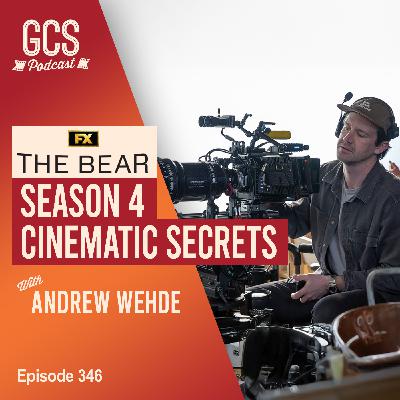
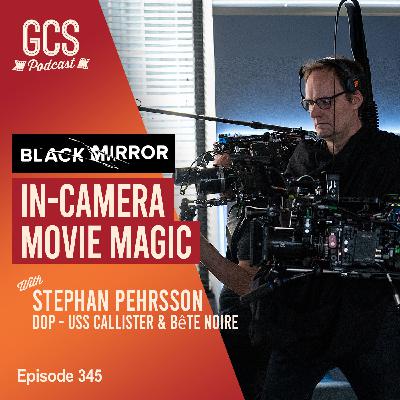
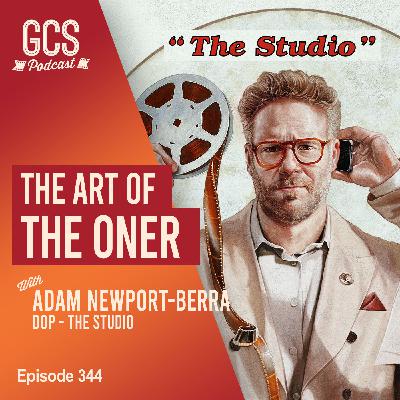
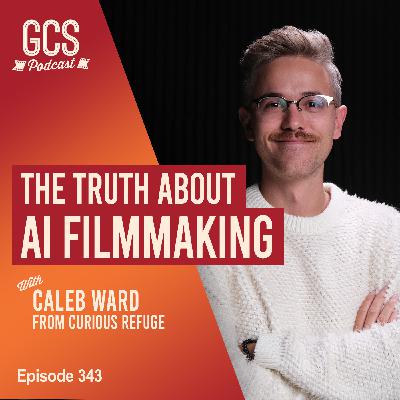
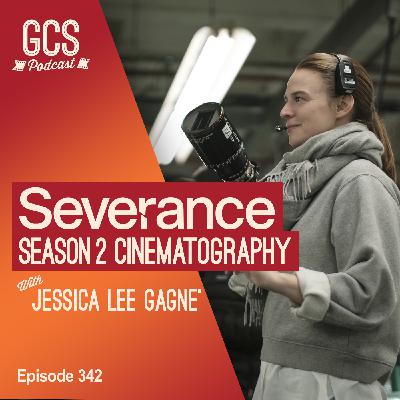


















I appreciate the effort, but talking to mute actors could have been more educating really.